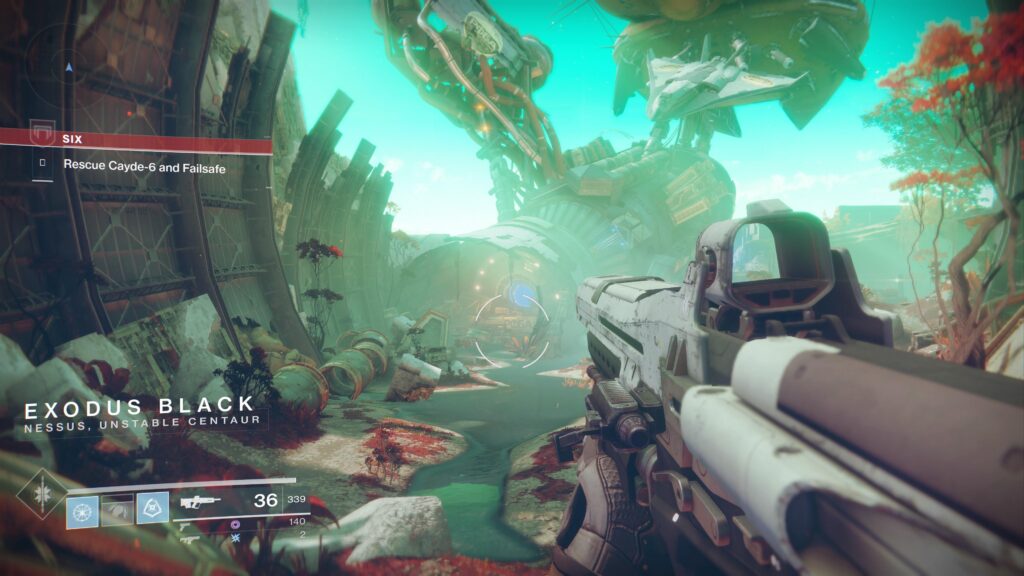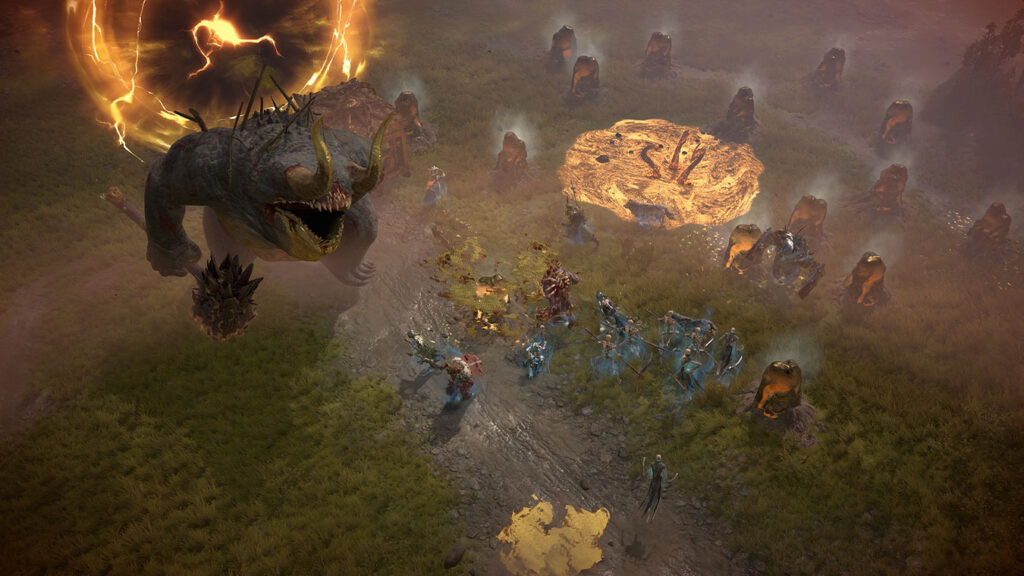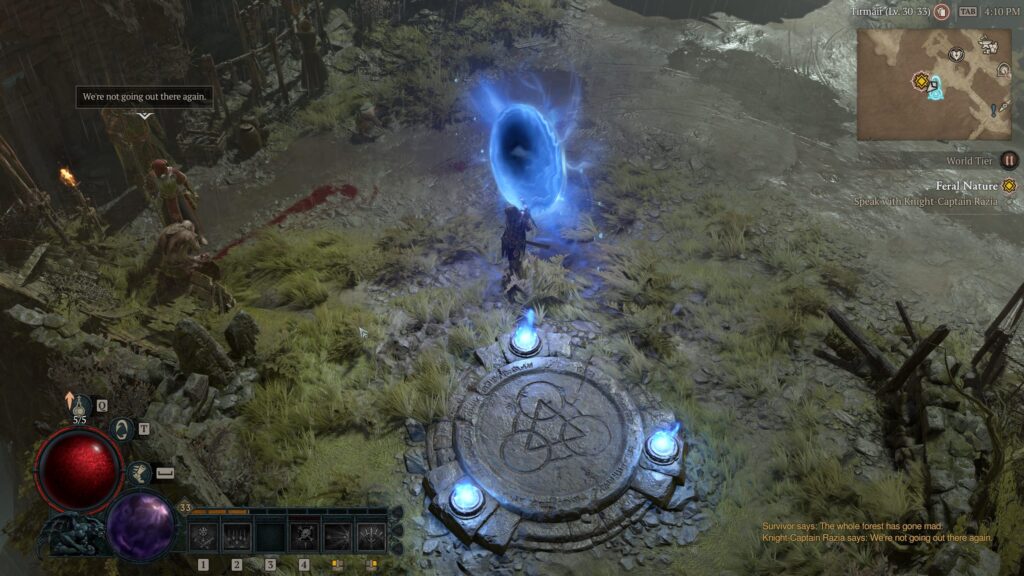Introduction to RTP and Reward Systems
The concept of Return to Player (RTP) has become increasingly significant in the realm of gaming, particularly concerning loot and reward systems. RTP refers to the percentage of all wagers that a game will pay back to players over time. This metric is crucial for understanding how gaming rewards are distributed and the payouts that players can expect from their in-game endeavors. A clear comprehension of RTP not only informs players about potential returns but also influences their approach to risk within the gaming environment.
In various games such as GTA Online, Destiny 2, and Diablo IV, the mechanisms of RTP play a pivotal role in shaping player experiences. These games deploy sophisticated reward systems that entice players with the promise of lucrative loot. Therefore, a high RTP percentage can indicate favorable odds for players, translating into an engaging and rewarding experience. Conversely, a low RTP may suggest that players are likely to encounter challenges when striving for game rewards, leading to varying perceptions about the risk involved in pursuing specific in-game activities.
The modern gaming landscape continuously adapts to player expectations, and RTP serves as a benchmark for gauging the effectiveness of reward systems. Developers utilize RTP data to craft enticing loot mechanisms that not only enhance gameplay but also encourage player retention. Understanding RTP equips players with valuable insights into game design, allowing them to make informed decisions while pursuing in-game goals. As we delve deeper into the realms of GTA Online, Destiny 2, and Diablo IV, we will explore how each title utilizes RTP and reward systems to create unique and engaging player experiences, highlighting the nuances of gaming rewards and their implications.
Loot and Reward Mechanics in GTA Online
GTA Online features a complex loot and reward system that captures the attention of gamers, particularly within the Australian gaming community. Players engage with a variety of in-game currencies, including cash, GTA dollars, and chips used in the Diamond Casino, each serving distinct purposes in the game ecosystem. The dynamic allows players to earn rewards through multiple activities such as missions, heists, and daily objectives, adding layers of strategy and excitement to their gameplay experience.

The psychological element of luck plays a significant role in enhancing player engagement. In GTA Online, the unpredictability of loot drops during heists or the outcomes of casino games incorporates a thrilling risk-reward mechanic. Players often find themselves attracted to this element of chance, akin to experiencing ‘pokies play,’ where the anticipation of winning amplifies the overall enjoyment. As players chase after the next rare item or monumental cash prize, it creates a sense of urgency and excitement that drives continued participation in the game.
Meta-game strategies in GTA Online also come into play, particularly when considering aspects like mobile gameplay. Mobile platforms allow for a unique approach to grinding for rewards, enabling players to engage in faster-paced sessions while still achieving meaningful progression. This flexible play style offers players the opportunity to capitalize on shorter gaming sessions typical among a busy demographic, including Australian gamers who may turn to mobile devices to enhance their experience on-the-go.
Moreover, the thrill of the pursuit keeps players returning, as they navigate various challenges and opportunities within the game. This intricate loot and reward system provides a rich, immersive environment that encourages players to continually explore and engage with the game world, reinforcing the significance of both psychological factors and gaming strategies in fostering player loyalty and satisfaction.

Understanding Destiny 2’s Reward Structure
Destiny 2 offers a distinctive reward structure that is intricately designed to engage players throughout their gaming journey. The game’s progression system comprises various layers, including activities tailored to facilitate progressive play and incentivize consistent participation. Seasonal content plays a pivotal role in sustaining player engagement, as each new season introduces not only fresh gear but also unique mechanics and challenges that enrich the overall experience.
The endgame rewards in Destiny 2 are particularly noteworthy. They are crafted to cater to both casual and dedicated players, providing a diverse pool of items that can be obtained through different channels. For example, players can earn rewards by completing strikes, participating in raids, engaging in the Crucible, or undertaking seasonal activities. This flexibility allows players to adopt strategies that align with their preferences and gameplay styles, thereby maximizing their chances of obtaining desirable loot.

Furthermore, the role of randomness in the generation of rewards is significant. While skill and strategy are critical components of success in strategy games, Destiny 2 effectively incorporates an element of chance that enhances the thrill of obtaining new gear. This randomness can lead to unexpected rewards that positively impact a player’s journey, encouraging them to keep exploring various activities to discover hidden treasure.
To optimize their experience, players often devise strategies aimed at maximizing their loot output. This can include focusing on specific activities known for yielding higher rewards or collaborating with others in fireteams, fostering a sense of community while enhancing overall efficiency. The interplay between skill, randomness, and strategic planning forms the cornerstone of Destiny 2’s loot and reward framework, creating a dynamic environment where players continually seek to improve their gear and game experience.
Diablo IV: Crafting a Thrilling Loot Experience
Diablo IV presents an immersive loot experience characterized by its intricate mechanics and compelling gameplay that significantly enhance player engagement. Central to this experience is the concept of item rarity, which categorizes loot into distinct classes, ranging from common to legendary items. The diversity of loot quality not only influences player strategies but also heightens anticipation during gameplay sessions, as players seek to uncover rarer items that can significantly impact their character’s abilities and overall effectiveness in combat.
In Diablo IV, the drop rates associated with various items play a crucial role in shaping the loot experience. These drop rates determine the likelihood of obtaining specific items during gameplay encounters, effectively balancing the excitement of looting with the inherent risk-reward dynamic. Players often find themselves weighing their choices, deliberating on whether to tackle more challenging areas in hopes of achieving superior loot or to engage in less risky encounters that may yield more consistent, albeit less impressive rewards. This tension between risk and reward serves as a compelling mechanic, encouraging players to explore the vast landscapes of Sanctuary with a strategic mindset.


The thrill of high-stakes loot chasing is undeniably one of the central attractions of Diablo IV. Players are consistently motivated by the possibility of encountering powerful gear or unique crafting materials that can upgrade their existing equipment or offer new gameplay strategies. This excitement is further amplified through seasonal events and in-game challenges, where opportunities for high-value rewards become prevalent. The psychological payoff from finally obtaining a coveted item after enduring numerous battles adds a layer of satisfaction that is unique to the Diablo franchise, thereby enhancing the overall gaming experience and fostering a passionate community around loot chasing.
Comparative Analysis of Loot and Reward Systems
The loot and reward systems in GTA Online, Destiny 2, and Diablo IV exhibit distinct characteristics that significantly impact player experience and engagement. While all three games utilize a random number generator (RNG) mechanic, their approaches to rewards create varied user experiences that can both enhance and detract from player satisfaction. In GTA Online, players engage in an expansive open world where chaos and creativity reign supreme. The game’s loot system is heavily influenced by player-driven actions, allowing for varied strategies that invite continuous exploration. Players often participate in heists or game missions that dynamically shape their rewards, delivering a sense of agency that keeps them invested.
On the other hand, Destiny 2’s loot system draws players into its shared-world experience through a focus on cooperative gameplay and faction rewards. Here, players accumulate loot via competitive activities, including raids and strikes, where rewards are carefully designed to promote team strategies. Importantly, the game often emphasizes the time investment players must make to achieve optimal loot, creating a sense of satisfaction at the culmination of extensive efforts. This structured approach to reward systems not only enhances engagement but also enriches player experiences through collaborative achievement.
In contrast, Diablo IV employs a loot system that revolves around continuous character progression and the thrill of the hunt. The dark and immersive world of Diablo IV encourages a different kind of engagement, where players are rewarded for exploring dungeons and defeating formidable foes. The randomness of loot drops keeps players returning for more, effectively heightening anticipation and excitement. With advantages like item rarity and customization options, this system magnifies the role of RTP in shaping player experiences.
Ultimately, while GTA Online, Destiny 2, and Diablo IV employ different reward strategies, the underlying influence of RTP remains an essential aspect in shaping their respective user experiences and levels of player satisfaction.
The Role of Psychological Factors in Reward Systems
Reward systems in gaming are not solely based on tangible benefits like in-game items or currency; they are significantly influenced by various psychological factors that shape player experiences and engagements. One of the most prominent concepts is the excitement generated by gambling mechanics, which is often employed by developers to enhance player engagement. This excitement stems from unpredictable outcomes associated with loot boxes or randomized rewards, creating a tantalizing lure that keeps players returning for more, even if the chances of receiving substantial rewards are low.
Risk perception plays a crucial role in how players interact with reward systems. Players often evaluate the cost versus benefit of their actions based on their goals and the potential rewards. For example, in a game like GTA Online, where players may engage in heists, the anticipated payout can make the risk of failure seem worthwhile. This calculated risk-taking is prevalent in many online games, where the prospect of acquiring a rare item can significantly influence player behavior, pushing them to invest time and resources despite potential setbacks.
Moreover, player retention strategies use psychological principles effectively to keep users engaged over time. Games often implement tiered rewards systems where players receive incremental bonuses, fostering a sense of progression and achievement. This design taps into the human psychology of rewarding immediate gratification while also promising larger gains down the line. Consequently, players are more likely to stay engaged, as their brain chemistry can associate game participation with pleasure through dopamine releases triggered by successive rewards.
Understanding these psychological aspects offers deeper insights into reward systems in games like Destiny 2 and Diablo IV. By analyzing these factors, developers can craft more engaging experiences that resonate with players and keep them invested over extended periods.
Loot Boxes and Microtransactions: Ethical Considerations
The introduction of loot boxes and microtransactions has transformed the gaming landscape, particularly within titles like GTA Online, Destiny 2, and Diablo IV. These monetization strategies often serve to enhance the player experience by providing additional content and options for customization. However, they raise significant ethical considerations regarding player engagement and the potential risks associated with such systems.
One primary concern surrounding loot boxes is their resemblance to gambling. Players invest real money into obtaining virtual items, often without knowledge of what they will receive in return. This unpredictability can lead to compulsive spending behaviors, particularly among vulnerable groups such as younger gamers. The random nature of loot boxes may encourage repeated purchases, as players chase desirable in-game items. The ethical implications of this model have prompted discussions about the need for regulation to protect consumers, especially minors who may lack the understanding of the risks involved.
Community responses to loot boxes and microtransactions have varied. Some players appreciate the enhanced gameplay and additional resources they provide, while others express disappointment over perceived pay-to-win practices, which can skew fair competition. Backlash often emerges when monetization strategies appear intrusive or detrimental to the overall gaming experience. Developers are beginning to recognize the need for transparent practices, which can help foster a healthier relationship with their player base.
As the gaming industry continues to evolve, the dialogue surrounding loot boxes and microtransactions is likely to remain a focal point. Balancing the interests of developers and players is critical, necessitating an ongoing examination of the ethical ramifications of these monetization strategies. Addressing these issues is essential to maintaining a positive gaming environment that respects player autonomy while also benefiting developers financially.
Player Strategies for Maximizing Rewards
To navigate the intricacies of loot and reward systems in games such as GTA Online, Destiny 2, and Diablo IV, players can employ several strategies to maximize their rewards. Central to effective gameplay is an understanding of resource management. Players should prioritize acquiring and wisely utilizing in-game currencies and materials. In GTA Online, for example, focusing on high-reward heists and selling valuable goods can significantly enhance financial gain. Similarly, in Destiny 2, engaging in strike missions or raids that yield rare gear offers an efficient return on investment.
Another critical aspect of achieving high rewards lies in understanding and leveraging random number generator (RNG) mechanics inherent in these games. These RNG systems determine the outcome of loot drops, making it essential for players to identify patterns or methods that enhance their chances of acquiring high-value items. In Diablo IV, players can increase their odds of receiving superior gear by participating in higher-difficulty dungeons, where the loot drop rate improves considerably. Therefore, tackling harder challenges translates into better rewards while also providing opportunities for skill enhancement.
Moreover, participating in community events can be a rewarding strategy. Many online games host events that provide unique rewards or bonuses for player participation. In Destiny 2, limited-time events often introduce exclusive gear that cannot be obtained elsewhere. Similarly, GTA Online frequently features community-focused challenges that reward players with substantial in-game currency and rare collectibles. Staying engaged with the community through forums or social media can help players keep abreast of these events, thereby allowing them to capitalize on opportunities to maximize their rewards.
Overall, by adopting effective resource management practices, understanding RNG dynamics, and actively taking part in community events, players can significantly enhance their gaming experience, leading to increased rewards across various platforms.
Conclusion: The Future of Loot and Reward Systems in Gaming
As gaming continues to evolve, the significance of Return to Player (RTP) and reward systems cannot be overstated. Understanding these mechanisms is critical for both developers and players alike, as they play a vital role in enhancing the overall gaming experience. Through the analysis of popular titles such as GTA Online, Destiny 2, and Diablo IV, we have seen how these systems not only determine player satisfaction but also influence engagement and retention.
Looking ahead, potential future trends in loot mechanics are likely to be shaped by both technological advancements and changing player expectations. The rise of artificial intelligence and machine learning could lead to more personalized loot experiences, adaptive rewards that respond to players’ skill levels, and dynamic systems that keep gamers engaged over time. Such innovations may redefine how rewards are distributed, creating a more immersive and tailored experience for each individual player.
In addition, as player communities demand transparency and fairness, developers may shift towards more equitable systems that minimize frustration while maximizing enjoyment. The integration of player feedback into the design process will become increasingly important, fostering a profound connection between creators and their audience. With the gaming landscape becoming more competitive, the ability to analyze and adapt RTP and reward systems will be paramount in attracting and retaining players.
Ultimately, the link between gameplay and the thrill derived from loot and rewards will remain a central theme in gaming. By continuously exploring and refining these systems, developers can create a more rewarding experience that resonates with players, ensuring that the future of gaming remains vibrant and engaging.

